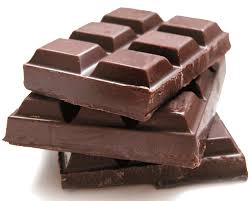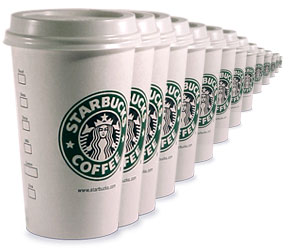Everyone loves Top 10 lists. I'll write the list, you add to it, and I'll try to expand on some of the points in future posts. Let's go.
- Set A Long Term Goal
- Set A Short Term Goal
- Be Consistent
- Take It With A Grain of Salt
- Fluids
- Just Go Do It.
- Make It From Scratch
- Go Harder.
- CHANGE something.
- Smile.

So, how do we get to long lasting fitness? Let's try to expand a little on these points.
1. SET A LONG TERM GOAL
This is critical. It isn't good enough to just say "I want to be healthier", or "I want to lose weight", or "I want to start running". How will you know if you've accomplished this? Answer: You never will.
Try to come up with something more concrete, like, "I want to lose 20 lbs", "I want to run a half-marathon", or "I want to be able to play with the kids without getting tired". With a clearly defined goal, you have a real target to shoot for. If you don't do this first, you won't know if you've made it.
2. SET A SHORT TERM GOAL
Once you have a target, breaking things down into more manageable pieces makes that goal more easily attainable. Whether you're working out at the gym, starting to run, bike, or swim, take a minute or two before
EACH session, to decide on one or two things you want to focus on
TODAY.
Are you working on your strength, your endurance, your speed, or something else?
Try picking ONE of your exercises and really focus on PERFECT technique.
Try doing ONE more REP of your training.
Try BEATING your lap time by just a bit.
Try going a minute LONGER on your run.
You get the idea. Having a short term goal, every day, that is achievable and attainable, brings the long term goal closer to being fulfilled!
3. BE CONSISTENT
The American Academy of Sports Medicine recommends 30-60 minutes of moderate activity 5 days a week (
here.) I would encourage you to aim for as close to EVERY DAY if at all possible. The more you can make exercise a daily routine, like brushing your teeth, or having a shower, the more likely it is you will continue.
4. TAKE IT WITH A GRAIN OF SALT
CHOCOLATE is GOOD FOR YOU! RED WINE is GOOD FOR YOU! GO GLUTEN FREE!
GET MORE VITAMIN D!
Yes, But. . . Chocolate has an awful lot of fat. Wine has a huge amount of empty calories. Going gluten free is important for people with Celiac Disease. Gluten free does NOT equal fat free, calorie free etc. Most gluten free food tastes awful (although this has improved dramatically over the last 10 years).
Vitamin D has been shown to be protective against a number of cancers, and is important for bone strength,
but sitting in the sun to get it for extended periods can cause skin cancer.
I think you get my point. The breathless articles in the news focus only on the purported benefits, without mentioning the down sides.
Everything in moderation, OK?
 5. FLUIDS
5. FLUIDS
We used to go on and on about getting 8 glasses of water a day, more if you were active. Even more if you were drinking any significant quantities of caffeine. Times are changing.
Using 8- 8oz glasses a day is a nice, simple thing to remember, but necessarily correct for everyone.
New guidelines, based on
drinking in response to feeling thirsty is becoming the new normal.
Another means of checking hydration is comparing naked body weight before and after exercise.
The difference can estimate fluid losses from sweating and is a good starting point to rehydrate back to.
Watching urine darkness before and after exercise is another broad estimator of fluid loss, although a lagging indicator (ie. if the urine is dark, you already getting dehydrated). Here's a
nice summary.
I hope to delve into this topic in much greater detail in a later post.
6. JUST GO DO IT.
Very often, the most difficult part about exercising is just getting started. Even the most die-hard athletes have days when they just don't feel up to it. On these days, I encourage you to promise yourself to at least lace up your shoes at the door. If you get this far, and honestly can't push yourself out the door, then go back to bed.
90% of the time, getting this far will get you going. And if you get out the door, it's surprising how much more you will be able to do. Just go.
7. MAKE IT FROM SCRATCH
Whether we're talking about brownies, pizza, burgers or smoothies, make your own if you can!
Why? You're in control of what goes into it. That means the amount of sugar, salt, fats, everything.
When reading ingredient labels of store bought or restaurant bought foods, the preservatives, sodium, chemicals, and calories can be shocking.
Homemade almost always means lower sodium, lower fat and certainly fresher ingredients. It also is a cost saver, as well as being more enjoyable, tastier, and a tendency to eat less. Need I say more?
8. GO HARDER
Try this. During your next workout, for the last minute of the exercise, go as hard as you can. For example, sprint the last minute of your run, get up out of the seat of your bike and go as hard as you can, whatever.
As your fitness level improves, try adding little accelerations DURING your exercise (ie, interval training).
The benefits are multiple. You are working in an anaerobic range (making all your muscles work harder). This is what causes "the burn" when you go hard.
You are increasing your heart rate, which then compensates by getting stronger.
You release more endorphins (the body's morphine), making you feel better when it's all over! This is what gives "the runner's high".
Try it. You'll like it!
9. CHANGE SOMETHING.
Every week, shake your routine up a bit.
Add in a new exercise. Try using a different machine at the gym.
Increase the weights you've been using by 5-10%.
Go a different route on your walk/ride/run.
Ask someone new to run with you this week.
Find a new recipe to try out on the kids tonight.
Changing things up, even a little, keeps things fresh and keeps you motivated.
10. SMILE.
Studies show (somebody actually studied this??) that smiling lowers blood pressure, relieves stress, and releases endorphins.
Next time the workout gets tough, try smiling. If nothing else, the guy you're racing is gonna worry what you've still got left.
That's it. In the coming blogs, I'll try to expand a little more on some of these points, and make them as practical as I can. In the meantime, give them a go.
Let me know what else should be on the list, and what you think so far!



























